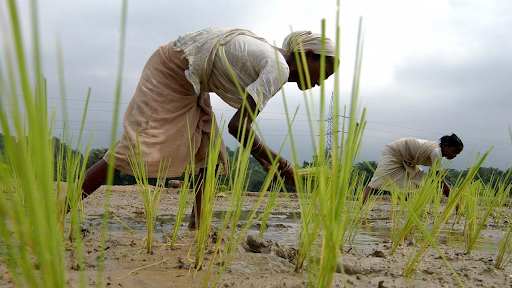




Copyright infringement not intended
Source: The Hindu
The United Nations General Assembly has named 2026 the International Year of the Woman Farmer, recognizing women's vital role in global agriculture while raising awareness of their concerns, including property rights and market access.
What is the ENACT project?The ENACT project stands for Enhancing Climate Adaptation of Vulnerable Communities through Nature-based Solutions and Gender-Transformative Approaches. Supported by the World Food Programme (WFP), the Government of Assam, and funded by Norway, it empowers women farmers in Nagaon. |
|
Scheme / Mission |
Key Focus |
Support for Women Farmers |
Example |
|
Mahila Kisan Sashaktikaran Pariyojana (MKSP) |
Enhances skills, capacity building, and promotes sustainable agriculture |
Empowers women farmers through training, SHG support, and improved practices |
MKSP supports Self-Help Groups (SHGs) to enhance agricultural practices and income generation |
|
Sub-Mission on Agricultural Mechanisation |
Promotes use of farm machinery and tools to improve productivity and reduce drudgery |
Offers 50% to 80% subsidies on agricultural equipment |
Women receive subsidised tools for sowing, weeding, and harvesting, making operations more efficient |
|
National Food Security Mission (NFSM) – Women’s Component |
Boosts food production with a dedicated women’s component |
30% of budget allocation earmarked for women in selected States/UTs for training, inputs, and seed distribution |
Women benefit from training, seed distribution, and input support under the scheme |
|
Practice Question Q. Discuss the socio-economic challenges faced by women farmers in India. |
© 2025 iasgyan. All right reserved